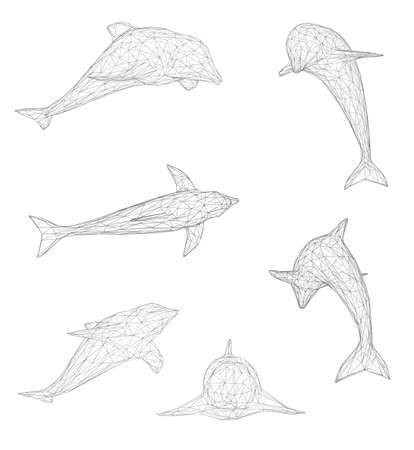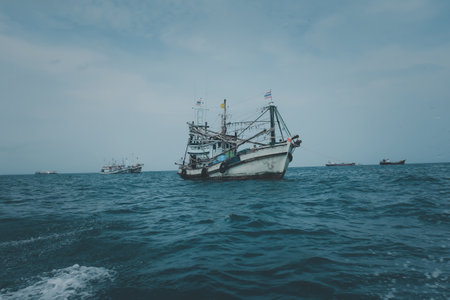1. Overview of Fish Finders & UK Angling Needs
Fish finders have become an essential tool for modern anglers, transforming the way we approach fishing across the UK’s diverse waters. At their core, fish finders use sonar technology to detect underwater objects, providing real-time information about fish location, water depth, and bottom structure. This innovation allows UK fishermen to make informed decisions whether targeting specimen carp in rivers like the Thames, pike in Scottish lochs, or bass along coastal estuaries. However, not all waters are created equal—local environments range from narrow, snaggy canals to vast reservoirs and tidal sea marks. British anglers often face unique challenges such as rapid weather changes, turbid waters, and variable depths. As a result, they require fish finders that offer robust GPS mapping, reliable sonar clarity in both freshwater and saltwater, and interfaces that cater to the practicalities of UK boating and bank fishing. Understanding these needs is crucial when comparing leading brands like Garmin, Humminbird, and Lowrance—each offering different strengths tailored to Britain’s varied angling scenarios.
2. Garmin Fish Finders: Features & Suitability for the UK
When it comes to fish finders, Garmin is a name that stands out globally—but how well do its devices suit the diverse waters and fishing styles found across the United Kingdom? Let’s break down the core features of Garmin fish finders and assess their fit for UK anglers, from canal match fishing in Lancashire to specimen hunting on Loch Lomond.
Key Garmin Features Explained
| Feature | Description | Benefit for UK Fishermen |
|---|---|---|
| CHIRP Sonar Technology | Advanced sonar delivering clear, high-resolution images of fish and structure. | Ideal for identifying shoals in turbid rivers or picking out individual targets in deep Scottish lochs. |
| Quickdraw Contours Mapping | Create custom HD maps of any water body as you fish. | Perfect for mapping lesser-known gravel pits or updating contours on your favourite stretch of canal. |
| Preloaded UK & Ireland Maps | Detailed BlueChart g3 and LakeVü maps covering coastal and inland waters. | Saves time planning trips to new venues—no need for separate map cards. |
| ActiveCaptain App Integration | Syncs with mobile devices for updates, community data, and remote control. | Get real-time feedback from other local anglers and manage waypoints from your phone on the bank. |
| Panfish, Predator & Saltwater Modes | Preset modes tailored to different fishing techniques and environments. | Easily switch between feeder fishing on rivers, pike fishing on reservoirs, or bassing off the Welsh coast. |
How Garmin Fits British Fishing Styles
The breadth of Garmin’s feature set makes it adaptable across multiple British fishing scenarios:
- Match Anglers: Quickdraw Contours is invaluable on commercial fisheries where margins matter. You can instantly map swims and locate drop-offs or shelves where carp might patrol.
- Pike & Predator Hunters: CHIRP sonar cuts through weedbeds in large waters like the Norfolk Broads, helping you spot lurking predators or baitfish shoals others miss.
- Sea Anglers: With preloaded BlueChart maps and saltwater modes, targeting cod off Whitby or pollock around Cornwall becomes easier—especially when paired with GPS waypoint marking for wrecks or reefs.
- Canoeists & Kayak Fishers: The compact design of models like the Garmin Striker Plus makes them practical for portable use on smaller craft often seen on Scottish lochs or Welsh estuaries.
Limitations in a UK Context?
While Garmin’s units excel in versatility, some users note that certain advanced features (like SideVü imaging) may be overkill for narrow canals or small club waters. Additionally, compatibility with specific UK Ordnance Survey data is limited compared to some locally developed systems. However, regular software updates and active user communities help bridge these gaps over time.

3. Humminbird Fish Finders: British Waters Performance
Main Technologies Behind Humminbird
Humminbird has become a household name among British anglers due to its commitment to innovative fish-finding technologies. Their hallmark feature is MEGA Imaging, which offers ultra-high-definition sonar imagery for both side and down views—making it easier to distinguish between baitfish, structure, and target species in UK waters. Coupled with CHIRP digital sonar, Humminbird delivers precise target separation, essential for locating elusive pike in Scottish lochs or bream shoals on the Norfolk Broads. AutoChart Live mapping technology is another game-changer, allowing UK fishermen to create custom maps of lesser-known venues such as gravel pits or secluded estuaries where detailed charts may not exist.
Usability for the UK Angler
Ease of use is central to Humminbird’s design philosophy. The intuitive menu system uses clear English prompts and logical navigation, which means even novice anglers can quickly access advanced features without fuss. Touchscreen options are available on premium models, while tactile buttons ensure reliability during cold and wet British weather. Many units are compact enough to suit smaller British boats or kayaks—a practical advantage on narrow rivers like the Thames or tight marina slips along the Cornish coast.
Freshwater & Sea Fishing Effectiveness
For freshwater enthusiasts, Humminbird’s dual-spectrum CHIRP excels at picking up delicate presentations and scattered fish in weedy canals or deep reservoirs. The high-resolution imaging reveals underwater features such as sunken trees or drop-offs—prime locations for carp, perch, or zander. Meanwhile, saltwater users benefit from robust GPS chartplotting and salt-tolerant transducers, enabling safe navigation and productive fishing around rocky outcrops off Wales or the shifting sandbanks of the Solent. Tide tables and integrated charts tailored for UK coastal regions further enhance safety and catch rates during sea sessions.
Practical Insights for Real-World Success
Humminbird’s real-world effectiveness shines through when you need swift adaptability—switching from targeting tench in a misty fenland drain at dawn to chasing cod over wrecks in the North Sea by afternoon. Quick installation mounts and versatile networking options let you upgrade your electronics suite without major rewiring, a blessing for club anglers sharing tackle or those moving between different waters weekly. Whether you’re match fishing on a canal or pleasure angling on a tidal estuary, Humminbird offers reliability and precision tailored to Britain’s diverse fishing landscape.
4. Lowrance Fish Finders: Local Waterways in Focus
When it comes to angling on British waters, Lowrance fish finders often stand out for their dedication to UK-specific needs. Let’s break down what makes Lowrance a top contender for both coarse and sea anglers navigating local rivers, lakes, canals, and coastal stretches.
UK-Specific Mapping: Detailed Cartography for British Anglers
Lowrance units come preloaded with highly detailed C-MAP mapping that covers the UK’s most popular inland waters and coastlines. Many models support easy updates or user-generated mapping via Genesis Live, letting you create your own maps of lesser-known swims or tidal estuaries—a game-changer for competitive match anglers or those exploring new venues.
Mapping Features Comparison Table
| Feature | Lowrance | Garmin | Humminbird |
|---|---|---|---|
| UK Inland Water Coverage | Extensive (C-MAP) | Good (BlueChart/Quickdraw) | Moderate (AutoChart UK) |
| User-Created Maps | Genesis Live | Quickdraw Contours | AutoChart Live |
| Tidal & Sea Chart Support | Yes (Navionics/C-MAP) | Yes (BlueChart) | Limited (Coastal Focus) |
Day-to-Day Usability: Practicality for British Anglers
Lowrance is renowned for its intuitive interface and robust touchscreens—even with wet or gloved hands, crucial when weather turns “typically British.” The menu structure is straightforward, making it easy to toggle between sonar, chartplotting, and split-screen views without faff.
Main Advantages for Coarse & Sea Anglers:
- Sidescan Imaging: Pinpoint features like drop-offs and weed beds in canals or lochs.
- ActiveTarget Live Sonar: Real-time fish tracking—ideal for specimen hunters targeting barbel, carp, or bass.
- NMEA 2000 Compatibility: Seamlessly integrates with other boat electronics common on sea-fishing vessels.
- Tough Build: Withstands salt spray and sudden rain showers typical of UK weather.
User Tips: Making the Most of Lowrance in the UK
- If fishing small club waters not covered by standard charts, use Genesis Live to build up your own detailed bottom maps over time.
- For sea anglers around the Solent or North Sea coast, combine C-MAP charting with StructureScan to safely navigate tricky sandbanks and locate shoals.
- Keen match anglers can customise split screens—showing both side imaging and traditional sonar—to maximise peg efficiency during timed sessions.
The combination of advanced mapping, responsive controls, and rugged design means Lowrance continues to impress British anglers who want reliable tech tailored to the realities of local waterways. Whether you’re stalking perch on the Thames or seeking cod off Whitby, Lowrance provides the confidence and clarity needed for every session.
5. Side-by-Side Comparison: Garmin vs Humminbird vs Lowrance
Price
When it comes to budget, all three brands offer a range of fish finders to suit UK anglers from hobbyists to professionals. Garmin tends to offer slightly more affordable entry-level models, making it appealing for those just starting out. Humminbird sits in the mid-to-premium price bracket, with advanced features reflected in its cost. Lowrance offers competitive pricing and regular promotions through UK retailers, providing good value across its product spectrum.
Performance
Garmin is well-regarded for its user-friendly interfaces and fast GPS response times, perfect for quick setup on the bank or boat. Humminbird leads in imaging technology with their MEGA Imaging+ sonar, delivering crisp visuals that help you pinpoint fish and structure even in murky British waters. Lowrance stands out with its versatile CHIRP sonar and FishReveal technology, which makes target identification straightforward—a real advantage when targeting species like carp or pike in complex venues.
Local Map Support
For UK-specific mapping, Garmin’s Quickdraw Contours allows anglers to create custom maps of smaller lakes and rivers—ideal given the diversity of British fishing spots. Humminbird’s AutoChart Live also provides robust local mapping but can be pricier to access full features. Lowrance’s C-MAP Genesis is popular among UK boat anglers for its detailed coverage of inland and coastal waters, plus frequent map updates relevant to local conditions.
After-Sales Service in the UK
All three brands offer solid after-sales support in the UK, but there are subtle differences. Garmin has a UK-based support centre and a strong reputation for efficient repairs and warranty service. Humminbird relies on authorised dealers for most support queries; response times can vary by region but are generally positive. Lowrance has a dedicated UK helpline and online resources, ensuring quick troubleshooting whether youre on the water or prepping at home.
Summary Table
Garmin: Best for affordability and ease-of-use.
Humminbird: Excels at high-tech imaging and serious angling.
Lowrance: Balanced pricing with excellent mapping and customer service.
Choosing the Right Fit
Your ideal fish finder will depend on your budget, preferred waters (river, lake, or coast), and how much you rely on advanced tech or personalised maps. Each brand brings something unique to the table for UK fishermen—so weigh up what matters most for your angling style before you make your purchase.
6. Expert Tips: Choosing the Right Fish Finder for UK Conditions
When it comes to picking the ideal fish finder for British waters, there’s more to consider than just the specs on the box. From unpredictable weather to tidal rivers and tricky bank access, UK anglers face unique challenges. Here’s how to navigate your choice like a pro:
Weather-Proof Your Choice
The UK is notorious for its rain, fog, and sudden temperature changes. Opt for a fish finder with an IPX7 waterproof rating or higher, especially if you’re often on exposed banks or open boats. Touchscreens are handy, but traditional buttons may be easier to operate with cold or wet hands.
Tip:
Garmin and Lowrance both offer robust units designed for tough conditions, while Humminbird’s Helix series is known for its reliability in rough weather.
Tide and Current Awareness
From tidal estuaries to fast-flowing rivers, understanding water movement is crucial for success in the UK. Look for models that integrate GPS mapping and tide charts—this is where Garmin’s Quickdraw Contours or Lowrance’s C-MAP Genesis can make a real difference by helping you pinpoint feeding grounds as tides shift.
Tip:
Humminbird’s AutoChart Live is also popular among river anglers who want to map changing channels on the fly.
Bank Access and Portability
If you often fish from the bank, canal towpaths, or small day boats, portability matters. Compact, lightweight units like Garmin Striker Cast or Lowrance Hook Reveal can be easily carried in a rucksack and quickly set up. Consider battery life too—a longer session means you’ll need reliable power without constant recharging.
Tip:
Bluetooth or WiFi-enabled castable sonar models work brilliantly for roving anglers targeting urban rivers or remote reservoirs.
Regional Waters: Fresh vs Salt
The UK offers everything from wild Scottish lochs to saltwater estuaries. Make sure your chosen fish finder has suitable transducer frequencies—higher frequencies (e.g., 200 kHz) excel in shallow lakes, while lower ones (e.g., 83 kHz) suit deeper or saltier venues. Dual-frequency options give you flexibility across regions.
Final Buying Advice
Before splashing out, check local angling forums or ask at your tackle shop which brands other UK anglers trust for your favourite waters. Don’t underestimate after-sales service; quick repairs or software updates can make all the difference when you’re planning a weekend session. Ultimately, matching your fish finder’s features to the realities of British fishing will help you get more bites—and fewer headaches.
7. Conclusion: Best Fish Finder for the British Angler
After thoroughly comparing Garmin, Humminbird, and Lowrance in the context of UK waters, it’s clear that each brand brings its own strengths to the table. Garmin stands out for its intuitive interface and reliable GPS mapping, making it ideal for those fishing coastal areas or large inland reservoirs where navigation is crucial. Humminbird, with its powerful CHIRP sonar and advanced imaging, excels on complex UK river systems and lakes, helping anglers pinpoint elusive fish in dense underwater structures. Meanwhile, Lowrance offers some of the best value for money, particularly for budget-conscious anglers who still want excellent sonar clarity and solid mapping features.
For most British anglers, especially those targeting a mix of coarse fish, carp, pike or sea species across varied venues, Garmin’s user-friendliness and versatile mapping make it a top pick. However, if your fishing often takes you to challenging venues like the Norfolk Broads or Scottish lochs, Humminbird’s precise imaging could give you an edge. Lowrance remains a smart choice for club anglers or those starting out, thanks to its competitive pricing and straightforward operation.
Recommendation: Assess your typical fishing locations—do you need advanced imaging for snaggy lakes, robust navigation for tidal estuaries, or just solid performance on a tight budget? Match these needs to the brand’s core strengths. For all-round reliability and ease of use in UK conditions, Garmin slightly edges ahead as the supreme choice, but both Humminbird and Lowrance deliver excellent performance tailored to specific angling scenarios and budgets.

